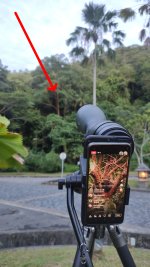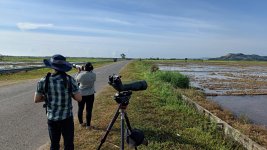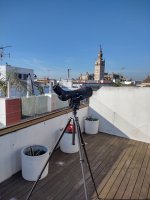kylie-bird
Member

Hi, I'm researching scopes to buy one soon and I'm confused about straight vs angled. It seems like angled is more often recommended, but it seems to me that with an angled one you have to be bent or hunched over to look through it - you'd have to bend your neck or back to look down into it, I imagine. Whereas with a straight scope you can keep your back and neck straight right? I imagine if looking at shorebirds on ground level you could set the tripod low, sit on a chair or squat and be pretty much looking straight ahead. So I imagine that if you are looking through it for a while, a straight one would be more comfortable than an angled which I assume you have to bend to look through. Is this right or am I missing something because none of the articles discuss this













